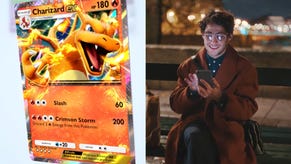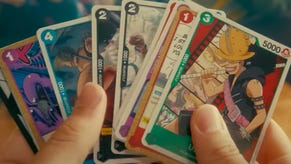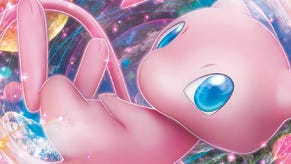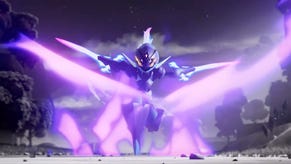How to build a Pokémon TCG deck for beginners
Learn the rules for building a card deck in the Pokémon TCG.
Once you’ve mastered how to play the Pokémon Trading Card Game, you’ll almost certainly want to find out how to build a Pokémon TCG deck. Like the video games, a lot of the fun of the Pokémon TCG is the chance to assemble your own party of Pokémon, combining different strengths, weaknesses, evolutions, energy types and trainer cards to gain the advantage over your opponent and ultimately claim victory.
If you’re completely new to the Pokémon Trading Card Game, the best way to learn is probably by picking up a pre-made deck pack. These are widely available and can be based on a variety of things, from specific themes (such as Electric-type Pokémon, if you’re a Pikachu and Zapdos fan) to World Championship decks that recreate the pro decks used by master trainers in high-level tournaments. These ready-to-play decks let you focus on learning the rules without worrying that your deck is potentially unbalanced or having to invest in lots of booster packs.
Once you’re comfortable with the basics of playing, though, you’ll probably want to learn how to build a Pokémon TCG deck. Building a Pokémon TCG deck is similar compared to learning how to build a Magic: The Gathering deck and other popular collectible card games, but there are a few unique things that set the Pokémon Trading Card Game apart from the rest of the crowd - and make it a little bit easier to pick up if you’re a total newcomer.
What are the rules for building a Pokémon TCG deck?
The rules for building a Pokémon deck specify that a player’s deck must always have a total of exactly 60 cards, with no more than four cards of the same name. This applies to all types of cards, except energy cards.
For example, you might decide to have four Eevee cards, along with some of the Pokémon’s various evolutions - Vaporeon, Jolteon, etc. Although you couldn’t have more than four cards called just ‘Eevee’ - even if the cards’ artwork is different - you could then also have four copies of the Eevee & Snorlax Tag Team card from Pokémon TCG expansion Sun & Moon - Tag Team. That’s a lot of Eevees!
Although you can include any number of any type of card - Pokémon, trainer and energy - in your deck other than the rule above, it’s often recommended that beginners aim to have an even split of Pokémon cards, energy cards and trainer cards: 20 of each. More advanced players may change the amount of each card type they have in order to focus on a particular play style or strategy.
You also want to consider what types of Pokémon you will include, to plan for certain Pokémon types, strengths and weaknesses. You may decide to have conflicting types - Water and Electric, for instance - in order to defend against certain Pokémon types. Of course, you should make sure you have the correct number and type of energy cards needed for your Pokémon to perform their attacks and abilities.
Often, the best plan for building a Pokémon TCG deck is to look into what cards you think would be most effective using the Pokémon website’s official trading card database.
What are the Pokémon TCG card types?
Energy cards
The staple of your deck, a certain number and colour combination of these cards is required to perform moves on a Pokémon card. Unlike the video games, the Pokémon Trading Card Game offers 10 main types of Pokémon and energy : Colourless, Dark, Psychic, Fighting, Water, Dragon, Metal, Fire, Lightning and Grass. An eleventh energy type, Fairy, was recently phased out of the game as part of the Sword & Shield expansion; Fairy-type Pokémon and energy cards remain legal to play in Standard matches, but no new Fairy Pokémon will be introduced to the TCG from Sword & Shield onwards, with Fairy-type Pokémon from the video games included as Psychic-type cards.
Trainer cards
Despite the name, not all trainer cards are actually trainers - they’re divided into three subtypes: items, stadiums and supporters. They all have different ways to help you get to your end goal of winning the match.
- Item cards are typically single-use cards that can do anything from evolving Pokémon straight to Stage 3 without needing the relevant cards (a bit like a Shiny Stone!) to allowing you to shuffle your deck back into the pile and draw a fresh hand of cards. You may play as many item cards per turn as you like.
- Stadium cards are environmental factors, similar to what happens in the video games if it rains - be it taking less damage, causing more damage or even being able to take your Pokémon out of play for free. Only one stadium card can be played each turn.
- Supporter cards are all of those familiar faces you might know from the video games, be it Lillie from Sun & Moon or N from Black & White. These cards all serve various purposes but are incredibly important for tipping a match in your favour. Like stadiums, only one supporter card can be played during a turn.
Pokémon cards
The most well-known cards in the Pokémon TCG, much like in the video games, you use your Pokémon and their skills to knock your opponent’s cards out of the game. (Not sure how? Learn how to play the Pokémon TCG.) Five Pokémon can be stored on your bench until they are put into play - only one active Pokémon may be in play at a time unless you’re using a Tag Team card.
When Pokémon are evolved from Basic to Stage 1 or Stage 1 to Stage 2, the next evolutionary form is placed on top of that Pokémon card. Pokémon may only evolve once per turn, and may not evolve on the turn they are played. They must also follow the evolutionary chain in order from Basic to Stage 1 and then Stage 2.
There are also special types of cards for Pokémon that can make them stronger than ever before; think of them like the video games’ Dynamax.
- EX/GX and Break: EX and GX are the stronger forms of your favourite types of Pokémon. They’re often the final stage of evolution and can be used immediately without following the evolutionary path, meaning they’re a staple for competitive players. Break cards, unlike EX and GX, will need to be evolved into play.
- Tag Team: These cards are a new addition to the Pokémon TCG series as of expansion Sun & Moon - Team Up and are used as stronger forms of existing Pokémon, much like EX and GX, but typically feature a pair of Pokémon, instead of just one.







